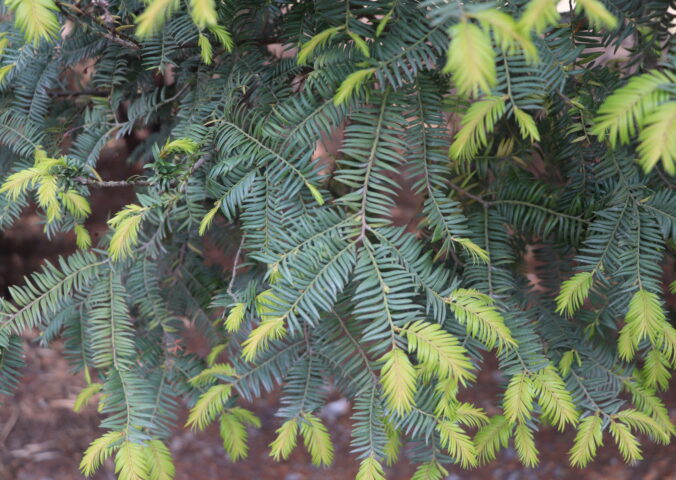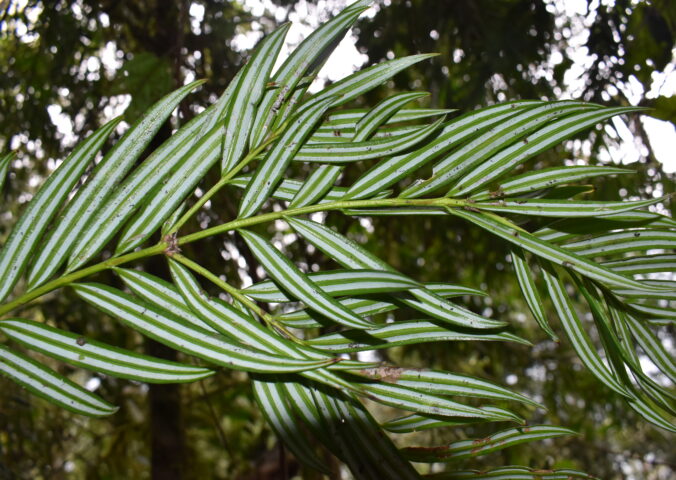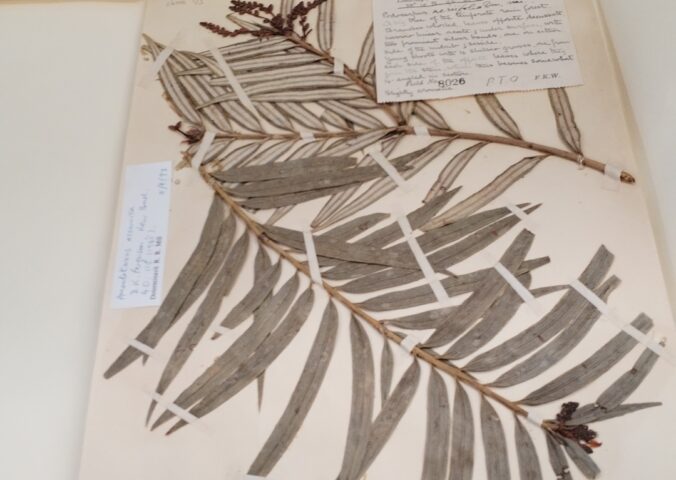About
The Assam Catkin Yew is a rare and enigmatic conifer native to the lush, forested regions of Northeast India. This understory tree thrives in the shaded and moist environments of subtropical forests, often found along stream banks and in ravines. It is distinguished by its unique catkin-like cones, from which it derives its name.
The Assam Catkin Yew, while a robust species, is vulnerable due to its restricted geographical distribution and specific ecological requirements. Its rarity and unique habitat preferences make it susceptible to environmental pressures. The tree’s parts, particularly its seeds and foliage, are valued for potential medicinal properties, though less is known compared to more extensively studied relatives like the Maire’s Yew. This interest, although not yet leading to widespread exploitation, underscores the need to monitor its populations carefully.
*Amentotaxus assamica* belongs to the small genus Amentotaxus, known for its ornamental and pharmacological potential. Despite its ecological and potential medicinal importance, the Assam Catkin Yew faces significant threats from deforestation and logging for agricultural development. These activities degrade its natural habitats, reducing its already limited numbers.
Conservation measures are crucial for the survival of the Assam Catkin Yew. It is currently listed as Endangered on the IUCN Red List, highlighting severe population decreases and the necessity for immediate conservation action. Protecting this species involves legal enforcement against unauthorized logging, habitat restoration, and the establishment of botanical gardens and nurseries to cultivate and reintroduce this yew into its native environments, thus aiding in population recovery and genetic diversity preservation.
- Order: Pinales
- Family: Taxaceae
- Trend: decreasing
- Size: 10-15m (?)
EDGE Score
Distribution
The Assam Catkin Yew is found in a limited and specific region in Northeast India, primarily in the state of Assam. Isolated populations potentially extend into adjoining areas of Arunachal Pradesh and Nagaland. This species is native to the subtropical forests that characterise this region, flourishing in the humid, mossy environments typical of these areas.
Habitat and Ecology
The Assam Catkin Yew flourishes in the humid, subtropical forests of Northeast India, mainly thriving in shaded and moist conditions along stream banks and in deep ravines. It is commonly found at elevations between 500 and 2,000 meters, where it prefers acidic, organic-rich, well-drained soils. The tree’s ability to adapt to the understory environment allows it to maximize the limited light available beneath the dense forest canopy.
Ecologically, the Assam Catkin Yew is an important species within its habitat. As a coniferous evergreen, it contributes significantly to the biodiversity and structural diversity of the forests. Its seeds, enclosed in distinctive fleshy arils, are a crucial food source for various local bird species, facilitating effective seed dispersal. The thick foliage provides shelter and nesting sites for numerous bird species and habitat for small mammals and insects.
Regarding reproduction, the Assam Catkin Yew is dioecious, meaning it has distinct male and female trees. The reproductive cycle involves the female trees producing the characteristic catkin-like cones that carry the seeds. These cones, less conspicuous than the bright berries of many other yews, highlight a unique aspect of its biology and contribute to its name.




